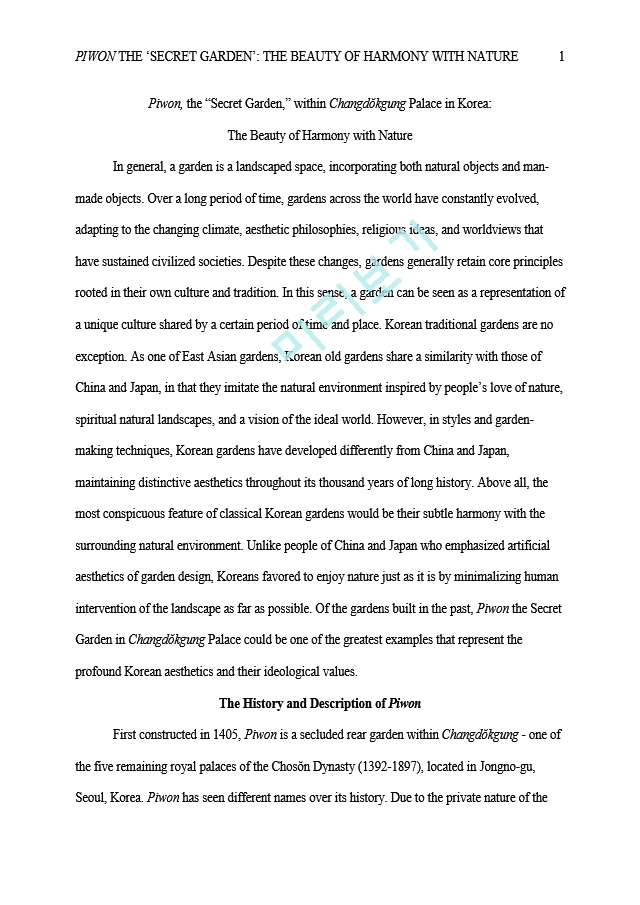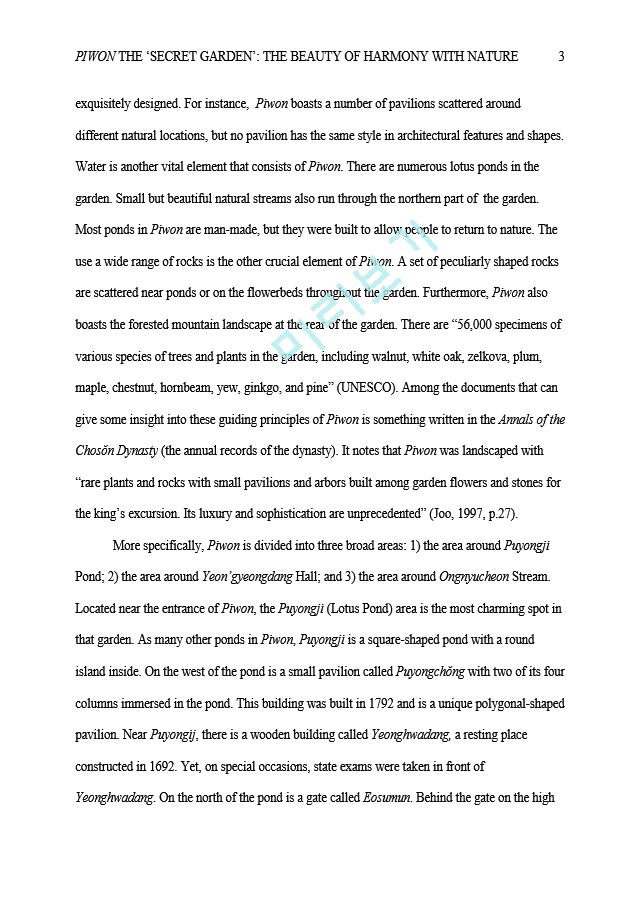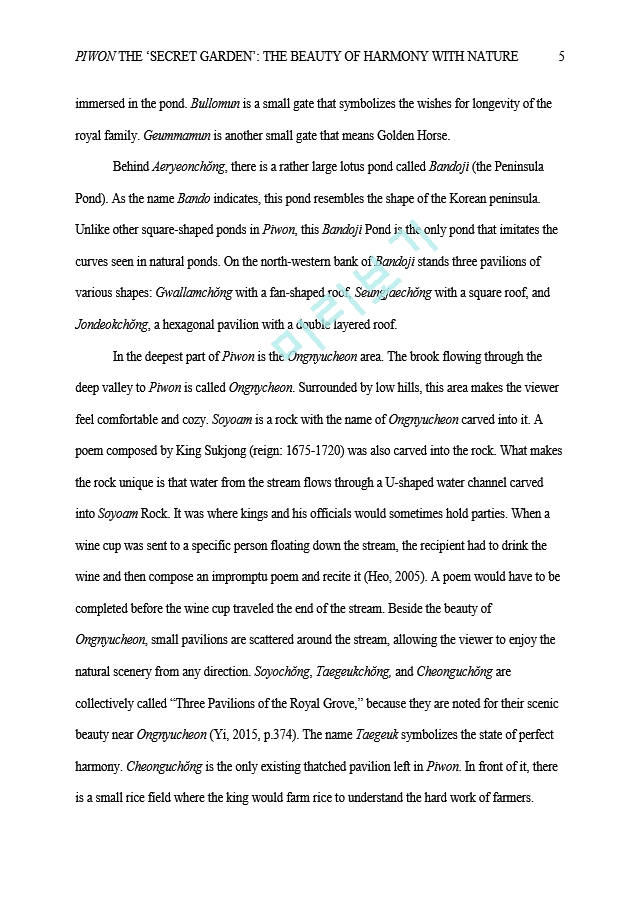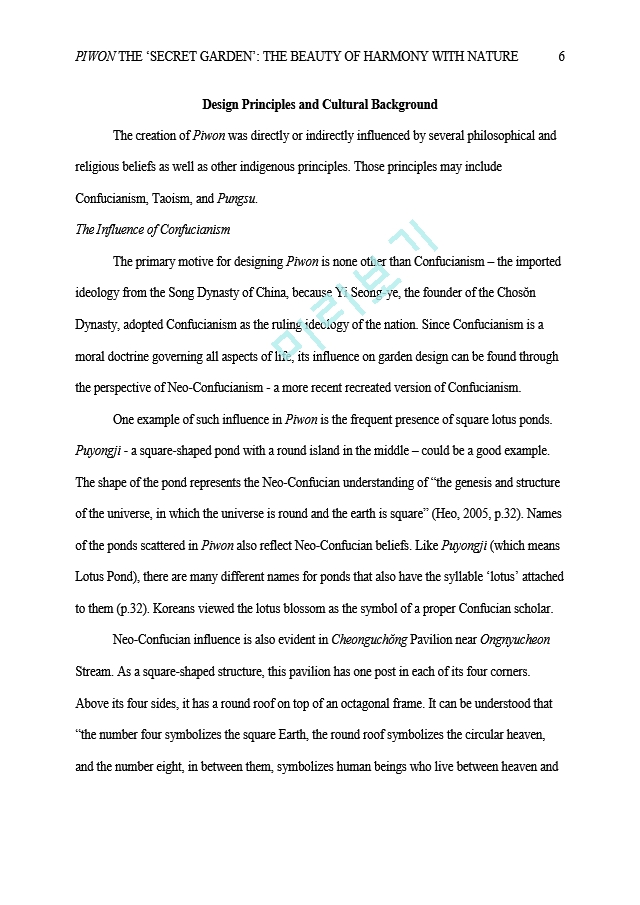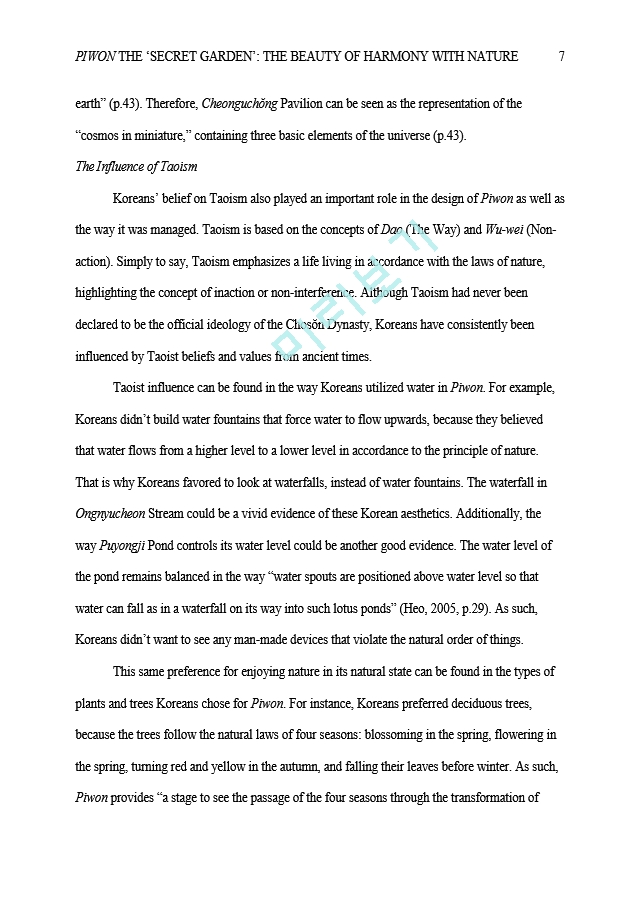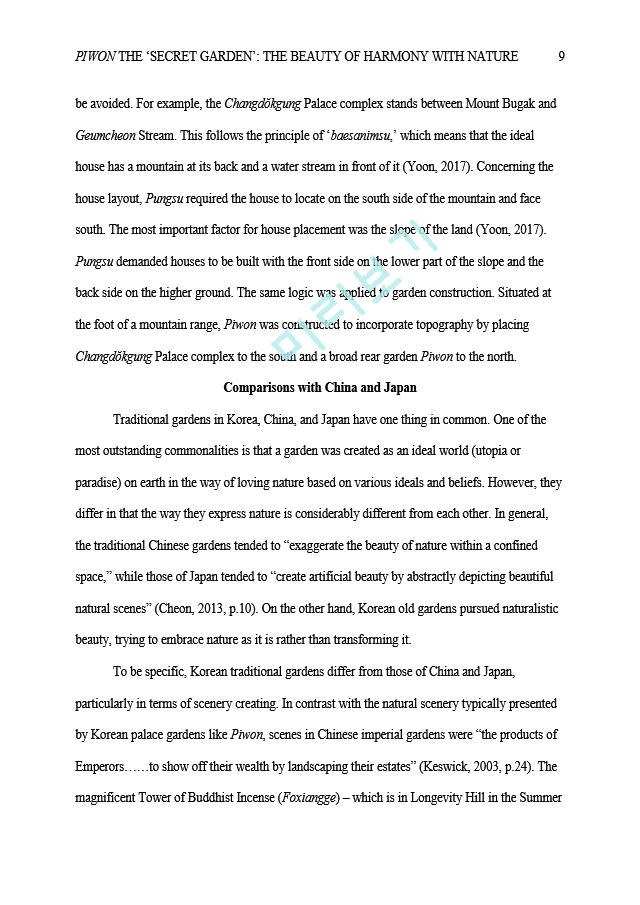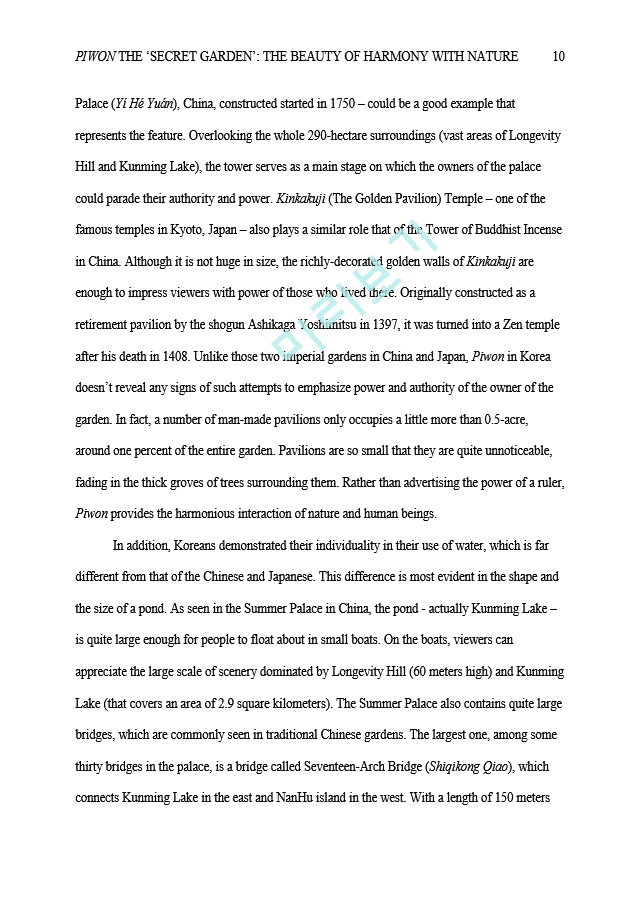|
In general, a garden is a landscaped space, incorporating both natural objects and man-made objects. Over a long period of time, gardens across the world have constantly evolved, adapting to the changing climate, aesthetic philosophies, religious ideas, and worldviews that have sustained civilized societies. Despite these changes, gardens generally retain core principles rooted in their own culture and tradition. In this sense, a garden can be seen as a representation of a unique culture shared by a certain period of time and place. Korean traditional gardens are no exception. As one of East Asian gardens, Korean old gardens share a similarity with those of China and Japan, in that they imitate the natural environment inspired by people’s love of nature, spiritual natural landscapes, and a vision of the ideal world. However, in styles and garden-making techniques, Korean gardens have developed differently from China and Japan, maintaining distinctive aesthetics throughout its thousand…(생략)
|














